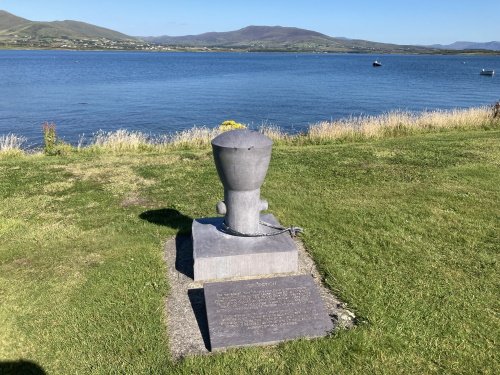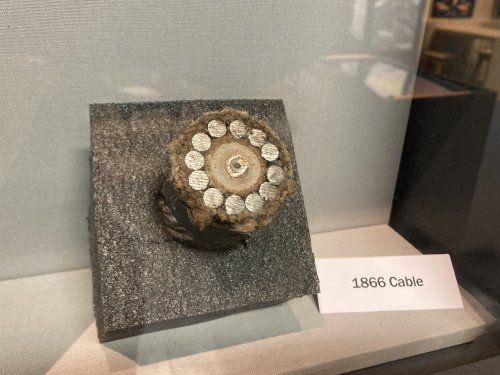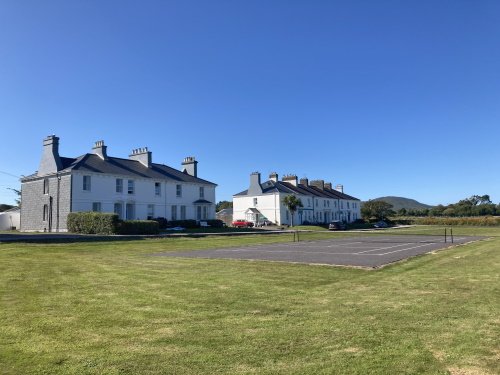The inclusion of the Transatlantic Cable Ensemble: Valentia-Heart’s Content in Ireland’s updated Tentative List brings a bit more spice for WH travellers to this corner of Ireland, County Kerry. It gives you something to do while waiting for a boat to Skellig Michael . I have been there twice, both for that reason. Valentia Island lies a 2.5h drive from Cork Airport on roads where you always have to be on guard – they are busy and narrow, and there always is some goat fair going on at Killarney or Killorglin; I hated the drive both times.

During my first visit in 2019, there still was very little information about which spots on Valentia the TWHS would cover. The cable station was the best bet, but it wasn’t accessible then as it was in private use and I had to make do with a couple of small memorials across the street. One is a slab of stone displaying the text of a telegram sent via the cable during WWI, another is a black-and-white pole (symbolizing a cable?), and the third is a commemorative stone bollard (its partner stands 3,071 km away at the other end of the ocean).
In June 2022, I visited Newfoundland as part of my East Canada road trip. It would have been an excellent chance to see the other end of the cable: Heart’s Content, a possible 11th WHS in the East Canada “cluster”, and the 4th WHS in Newfoundland. But it takes quite a detour from St John’s (1.5h) or Mistaken Point (3h) so I decided against it as driving across Newfoundland already takes up so much time. And I knew that I had that future tick already in my pocket because of the location in Ireland…

My second visit to Valentia Island was in August 2022, this time right before my successful attempt for Skellig Michael. That proved to be good timing, as on July 21 a permanent exhibition on the first successful telegraph connection between Europe and North America opened at the cable station. Valentia’s community had acquired and renovated the building, which is a big step towards a more tangible interpretation of this possible WHS.
I arrived almost at the closing hour (5 pm) but was warmly welcomed. There were other visitors present too. A 7,50 EUR entry fee is charged. The visit includes a good introductory video about the cable’s history. There’s really only one exhibition room, although they also have made good use of the walls of the entrance hall. I enjoyed the replicas of paintings now in the Metropolitan Museum in New York , reporting the Laying of the Cable. The main exhibition contains a lot of information panels, alternating with original pieces of cable and machinery on loan from the museum in Heart’s Content. Still, it is a disappointment that nothing of the former use of this cable station building can be seen.

It is tempting to reward the efforts of the early engineers (and the recent conservationists) with an easy WH listing, especially as monuments representing Developing Technologies including Telegraph, telephone, radio and television systems are considered a gap . Personally, however, I have a problem with the lack of tangible remains. It’s different from a cultural landscape like Grand Pré, where you’ll also find yourself staring out over the sea, of which at least can be said that it is associated with a cultural group that has memories there (and that would defend it if it came to harm). From what we know now, the Transatlantic Cable nomination will lean heavily on the preserved cable stations on both sides of the Atlantic . Despite all good efforts in the past decade, the Irish one still has very limited original remains of its use when you compare it to a similar site such as Grimeton . The former staff housing next door for example is still in private use. What happened there surely was outstanding as a technological effort, but does this translate to its tangible remains?



